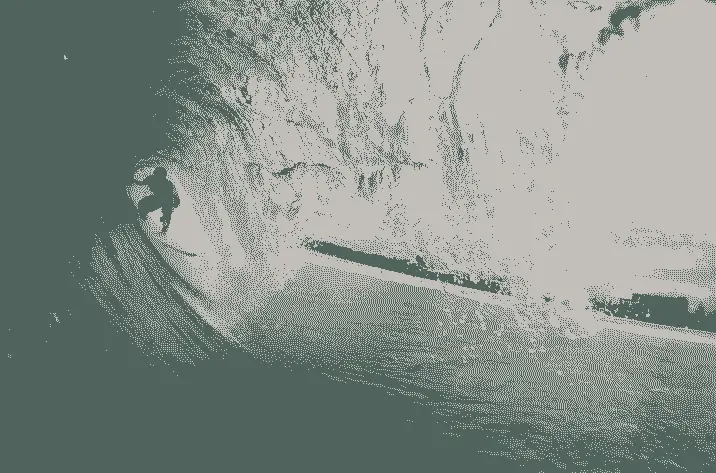Surfing is a recreational activity in which people ride waves in either an upright or prone stance.
Surfers intercept waves in the beach, rivers, and man-made waterways and glide over the ocean’s crest till the wave splits and loses its force.
Wave surfers stand straight on their surfboards and maneuver the sea toward the coastline, roughly perpendicular to the seafront.
Having trouble learning to surf? Here are some high-quality surfing tips from a real surfer.
Different Types of Wave to Surf
Let’s have a close look at the different types of waves you can experience prior you leave for your next surfing adventure.
There are various types of surf waves, and you should be familiar with each one before approaching it with your surfboard.
Surfing on a shortboard is the most advanced, here is how you can learn to ride a shortboard in a short period of time.
Reef Breaks
The surf crashed over a steep base at reef breakers. The seabed’s structure is constant, and the track is only affected by the route and amplitude of the waves.
You can usually find an open passage near the line-up and slide out over it. The majority of the world’s most dangerous waves crash over reefs, but there’s no cause to suppose there aren’t any tolerant reef breakers as well.
Beach Breaks
Waves breaking across a river bed are known as beach breaks.
The intensity and structure of the waves at the ocean are subject to fluctuate as the sediment and contour of the riverbed change.
A potential riverbank will sometimes be intact for weeks, while other times it will vanish in a short space of time.
Some oceans are noted for regularly creating excellent shorelines.
Reform Waves
Because of the different slopes of the seabed, this kind of wave might fade away as it hits large bodies of water and then split or overhaul.
Proficient surfers can step offshore before the overhaul waves reach the deepest seas, based on the weather and location. Amateurs will have to deal with the inside overhaul waves.
If you’re not used to battling the world’s reef or beach breaks, it’s a relatively safe spot to surf.
Point Breaks
A point break occurs when the lines of the swell strike a strip of shoreline in an angled or parallel direction, crashing across and over the beach instead of against it.
Point waves are usually found at a coastline and can occur in both rock and sand.
Surfing is one of the most difficult sports to learn. Here’s a full list why surfing is so tough.
Rivermouth Waves
Lovely Rivermouth waves are a once-in-a-lifetime opportunity for some surfers.
They’re comparable to point breaks in that they’re created when the river accumulates sand from well-defined coastlines and the wave splits off reliably and elegantly along that peak.
Double-up Waves
When 2 waves collide and their troughs and crests harmonize, you have this type of wave. The accumulated tidal energy forms a massive and immensely strong wave.
Crumbly Waves
These breakers are neither deep, swift, or strong, and they break calmly. When the base surface is more steep than normal, they appear. Because crumbly waves are not forceful, they are also known as mushy waves.
You’ll be able to handle all of the types of breaks listed above once you’ve gained adequate knowledge.
In the meantime, go gently and take each wave one at a time at a beginning or advanced surf session.
Here are my best surfing blog posts
- Beginner to Intermediate Surfer Advice (Best one)
